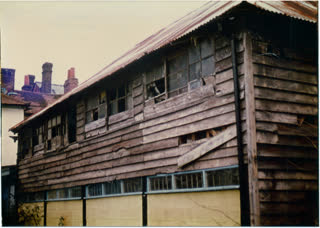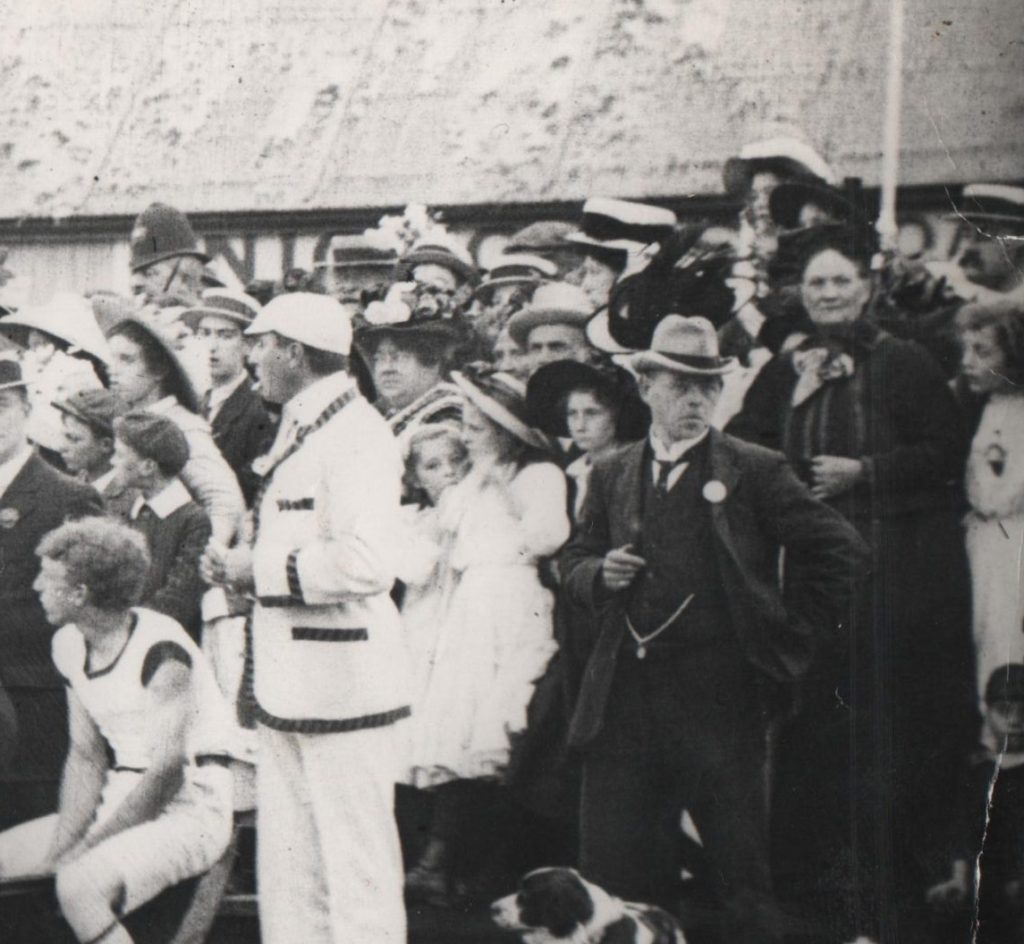Just Williams Part 2 – some of the Victorian tradesmen who shaped Egham High Street
Margaret C Stewart
Over the last few years we have seen many of the businesses in Egham High Street close – and welcomed new ones. Even without a pandemic these frequent changes are not unusual but it is always pleasing to see how some businesses stay for years, often under family management. This short series of articles looks at some of the businesses which began trading in Egham during the Victorian era and continued for over 50 years. What they have in common is that they were all begun by men called William…
2 William Frederick Larkin, printer and bookseller 60 High Street.
William Frederick Larkin was born in Egham in 1836, the son of William Larkin who had come, with his wife Ann (nee Barrat) from Amersham during the late 1820s. They lived at the east end of the High Street (the Avenue?) where their first son Richard Henry Blackford Larkin was born in 1829. William Larkin Senior was a builder and bricklayer but, with a growing family to feed (there were to be eight children), money was probably tight. In 1835 he was acquitted of sheep stealing – perhaps he was in the wrong place at the wrong time? However, his building business clearly flourished and by the early 1850s he was established at 180 High Street where he further expanded his interests by becoming Surveyor of Highways. He progressed to Senior District Surveyor of Highways for the Chertsey District. He continued to maintain his premises in the High Street until approximately 1870, after which he moved to Egham Hill. He died in 1880.
His sons were finding careers away from building…
Richard and later William Frederick moved into printing and bookselling. By 1860 Richard had become a master printer, with his brother as his business partner. They had two print shops: in Chertsey, where their younger brother Charles[i] was an apprentice, and at 60 High Street Egham, where Richard initially lived with two of his sisters, employing one man and two boys. The Egham branch was known as the Magna Charta Printing Works.
Both brothers married in 1862 and began to split their business interests. Richard, who had married Sarah Wells from Chertsey, continued to run the Chertsey business until the 1870s, after which he moved to Streatham where, describing himself as a lithographer[ii], he ran a printer’s and bookseller’s for the rest of his working life – until he was at least 71! He died in Streatham in 1913, aged 83.
William Frederick married Ann M. Taylor from Hounslow and moved to 60 High Street, taking over sole interest in the Magna Charta Printing Works. The business expanded, employing up to five men and boys. It offered a range of services including printing, publishing, engraving, and also served as a bookseller’s and newsagents. By 1867 William Frederick was additionally describing himself as Distributor of Stamps and his premises as Stamp Offices.[iii] He acted as an insurance agent for Phoenix Fire Assurance and its offshoot, Pelican Life.
The Larkins had 3 daughters – Lilian Emily (1863), Gertrude Annie (1865) and Kathleen Emma (1875) – and 3 sons – William Ellis (1864), Frank Edward (1869) and, named for his uncle, Charles Edward (1870 but sadly he died in 1873). Thanks to William Frederick’s hard work he was wealthy enough to send the two surviving sons to Cranleigh School, opened in 1865 primarily as a community school for the sons of local farmers. The choice of school may have been made on the recommendation of Larkin’s neighbour William Gardener who had sent his own eldest son a few years earlier. In keeping with the custom of the time, the girls who married did not have careers. Lilian married local shopkeeper Edward Budgen from the famous grocery family. Gertrude married the neighbour’s son, William Henry Gardener. Kathleen did not marry – she stayed at home to care for her father after the death of her mother in 1904 but later became a civil servant.
The older son, William Ellis, became a wine merchant in Hounslow; Frank Edward followed his father into printing.
Interestingly William Frederick’s sister, Annie M Larkin, married in 1870 another bookseller, George Winder Bourne, from Ramsgate. He may not have been in the best of health as he had disposed of his business by 1874 and moved to Egham where he died in 1879.
William Frederick continued to run Magna Charta Printing Works until 1915, latterly with the assistance of son Frank Edward, who was to take over the business when his father died in Holloway Sanatorium[iv] in 1916, leaving assets worth £2553 (£246,827 today, a not inconsiderable amount!)
Frank Edward continued the print works until his own death in 1937. He married in 1910 at the age of 40, acquiring a stepson Herbert John Ellison (who was a commercial traveller until he joined the Royal Marines during World War I), but had no children of his own.
It fell to his business partner Bertram Beddoe to continue to run this respected local business used by individuals and organisations alike. For the history of the Magna Charta Printing Works see https://eghammuseum.org/magna-charta-printing-works/
The printing premises were demolished in 1980 and No. 60 is now part of Tesco.
Sources: Egham Museum photograph and document collections (including rate books),
https://www.ancestry.co.uk , https://www.findmypast.co.uk
[i] Charles did not stay in the printing business. From 1867-70 he was a wine and spirit merchant in Egham before moving to lodgings Hackney, where he described himself as a “printer black.” He then moved into farming and settled with his wife Emily in Horsham, where he died in 1891.
[ii] lithography is a method for printing on a smooth surface, using chemical processes to create an image
[iii] This does not mean that he sold postage stamps – the Post Office was elsewhere. He sold duty or revenue stamps, a method of tax collection. Inland Revenue stamps were introduced in 1860 but stamps were also used to pay Customs Duty and Land Registry fees.
[iv] This does not necessarily indicate a long-term mental health problem. He may well have suffered some debilitating condition such as a stroke or age-related dementia.




